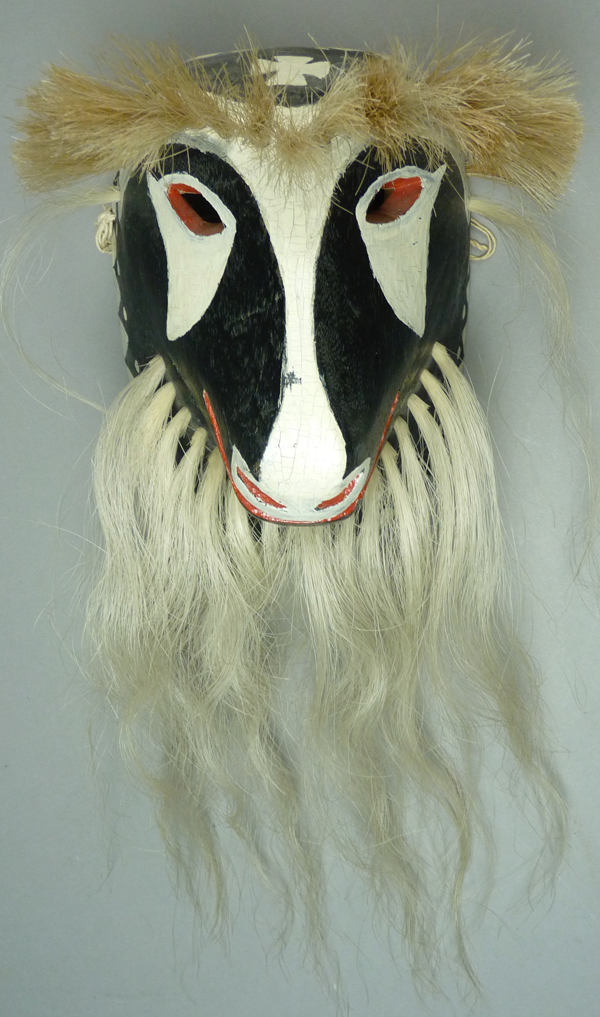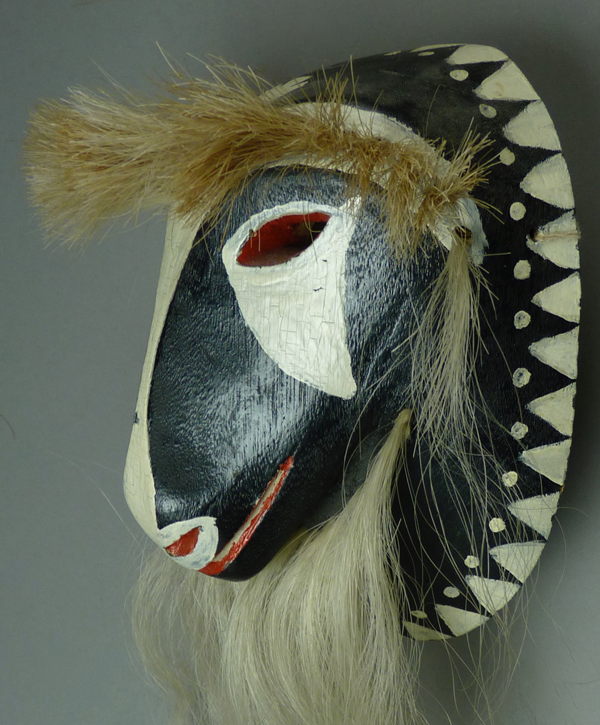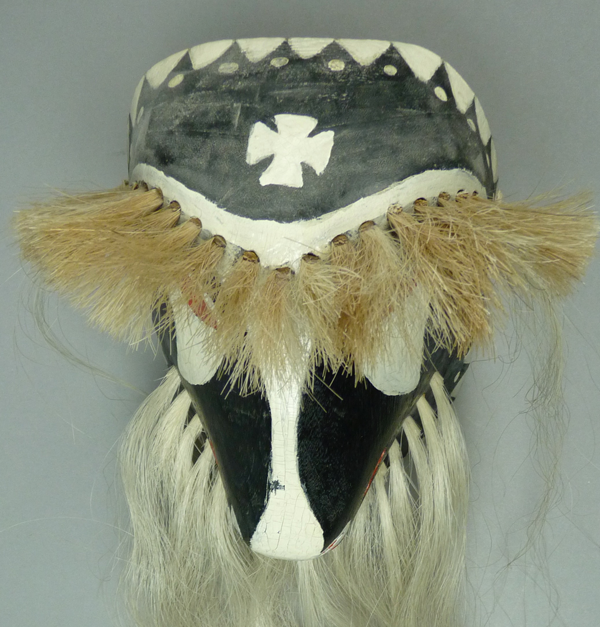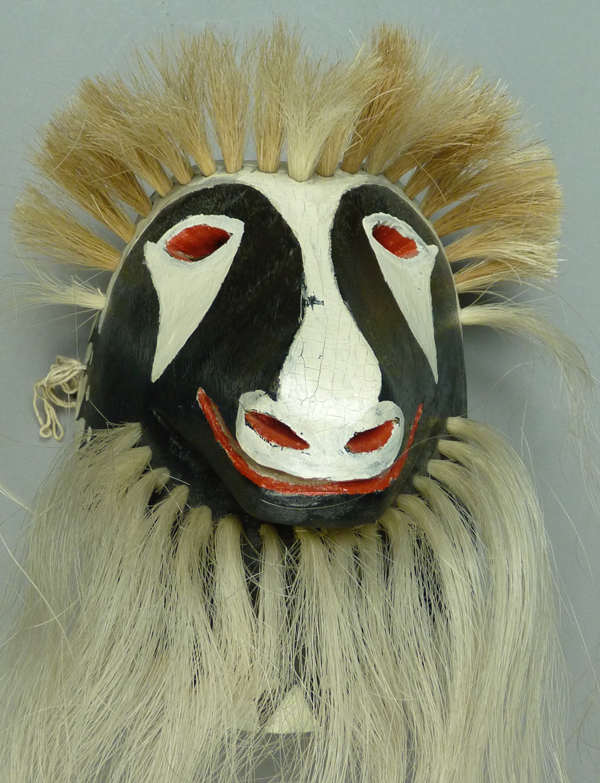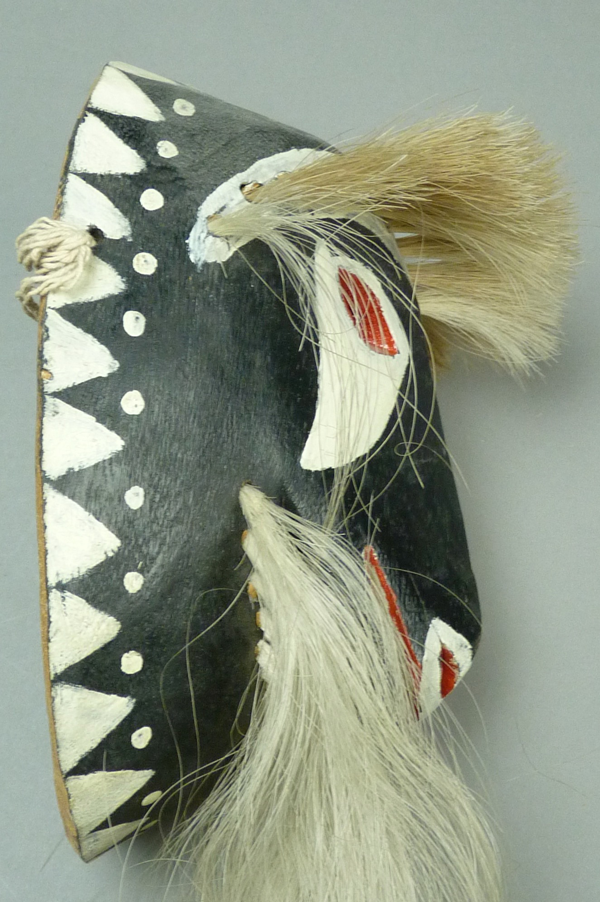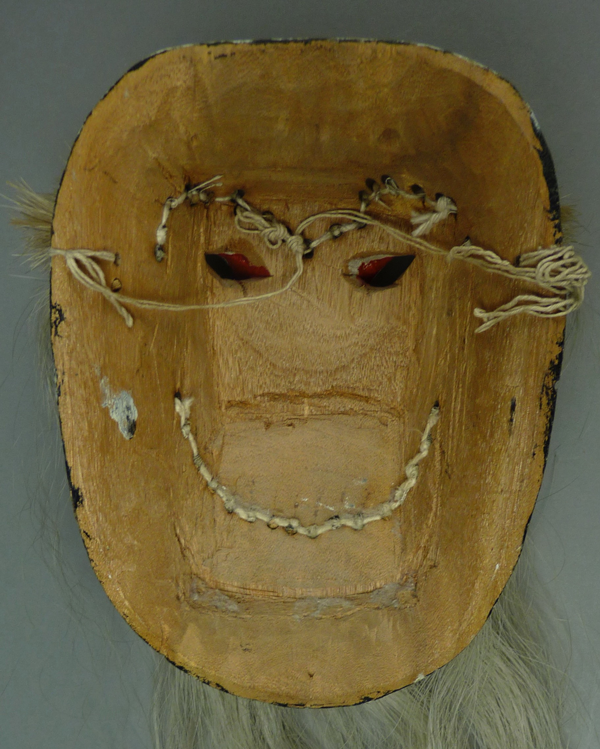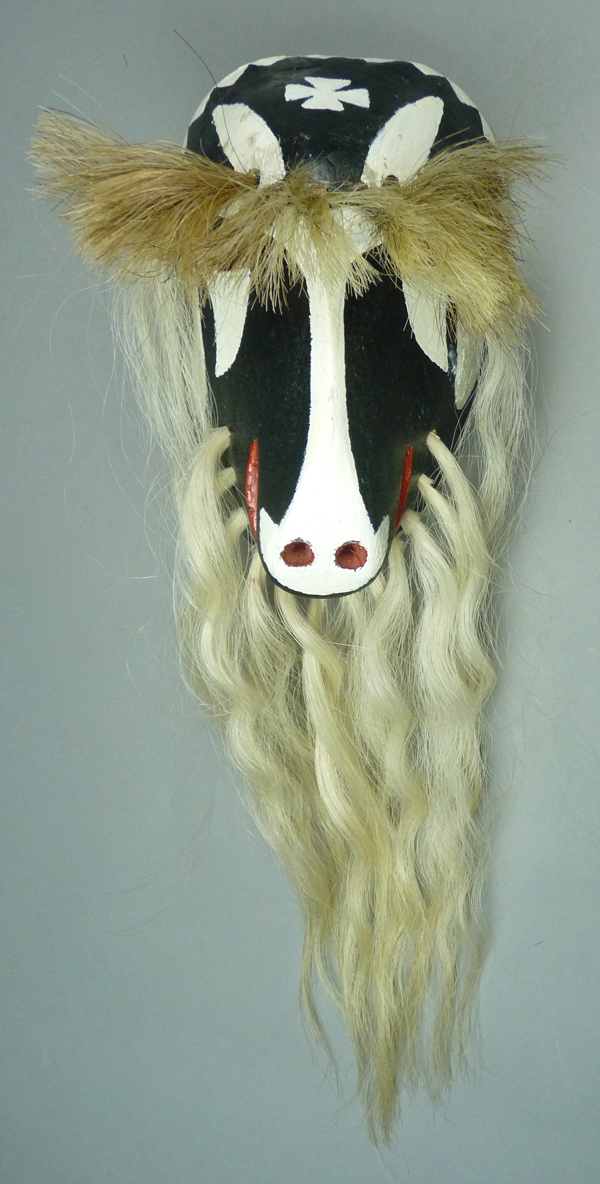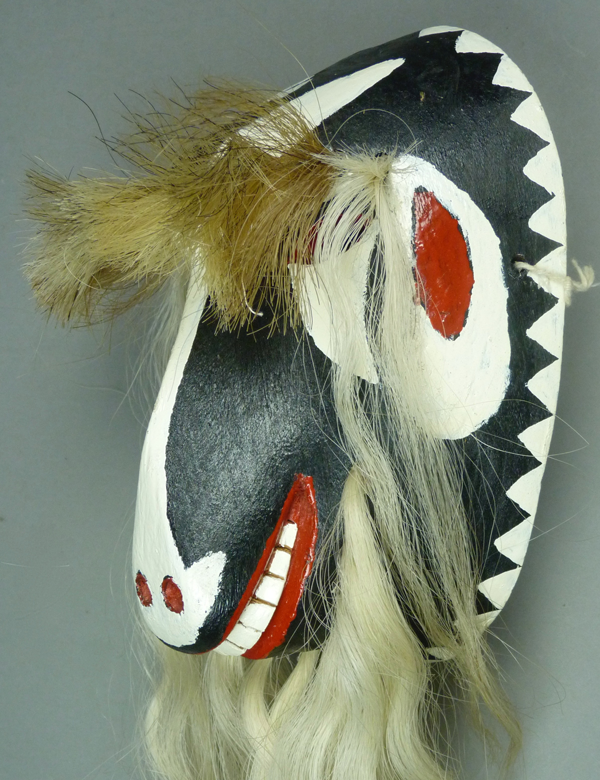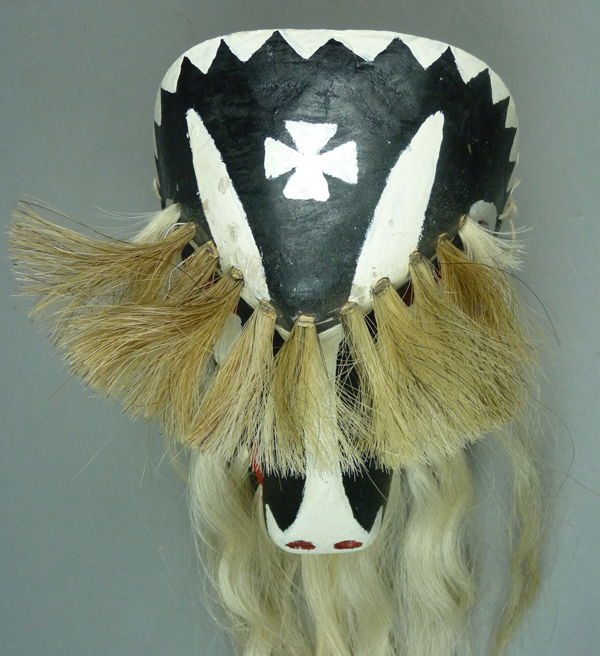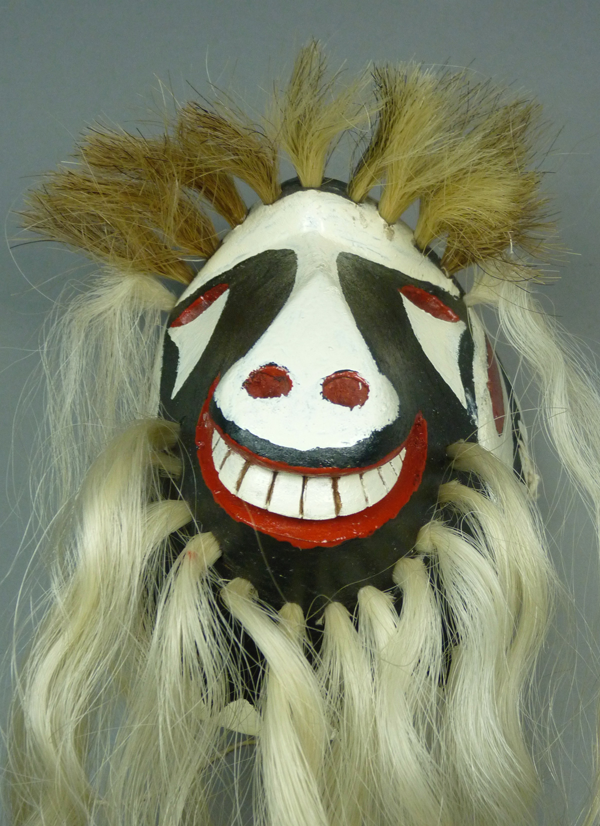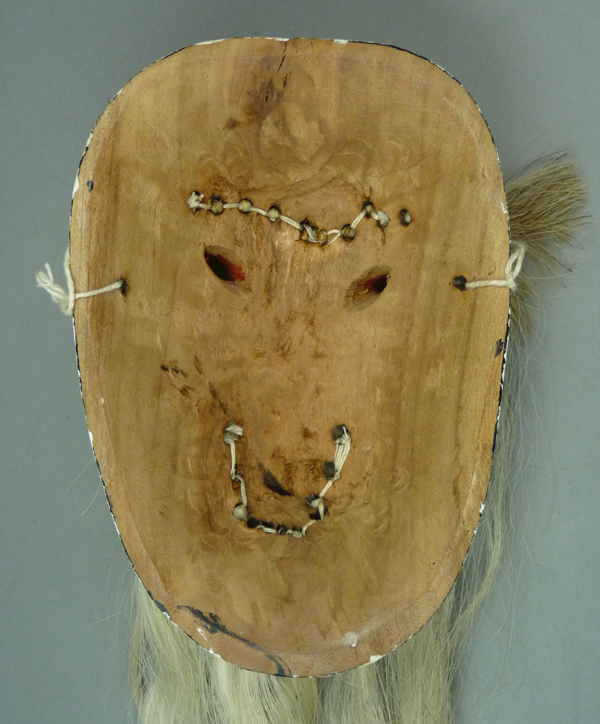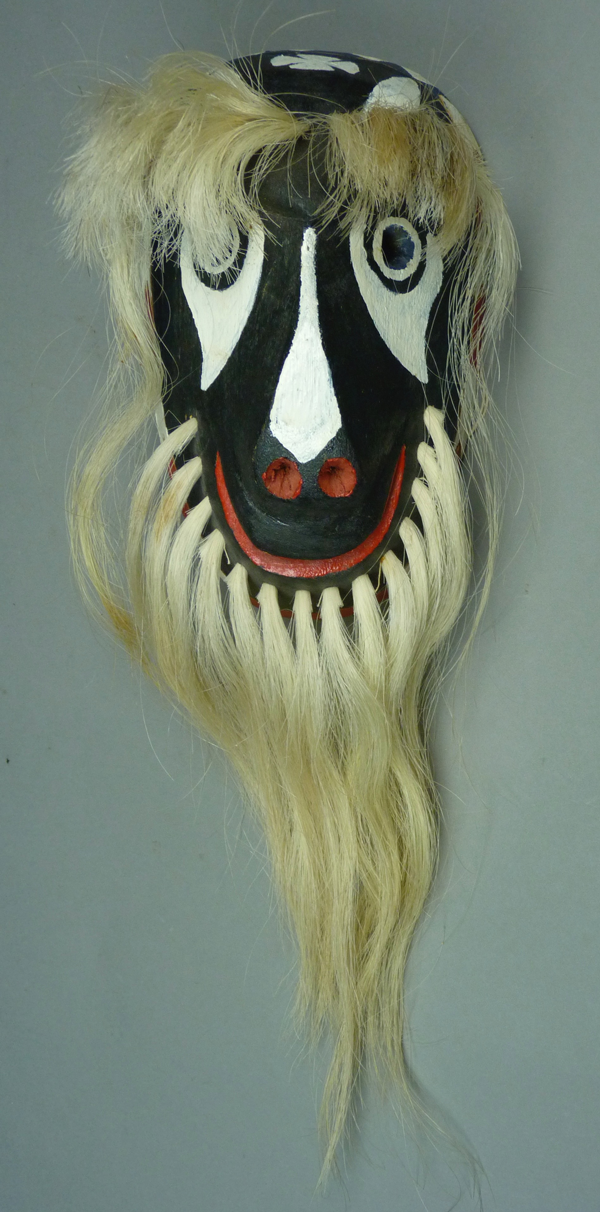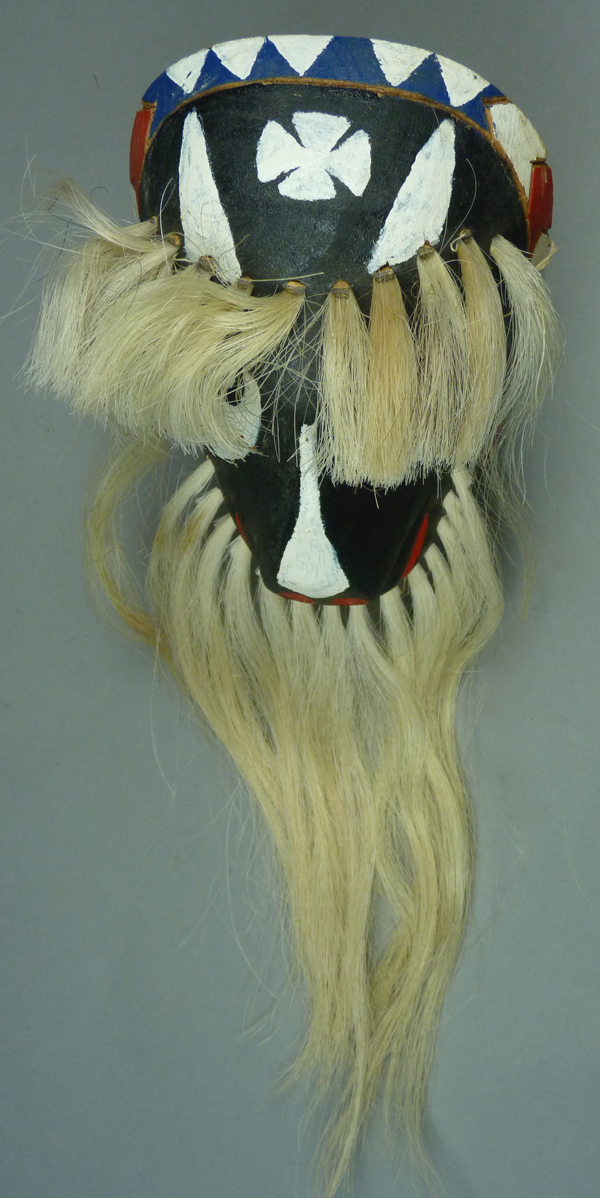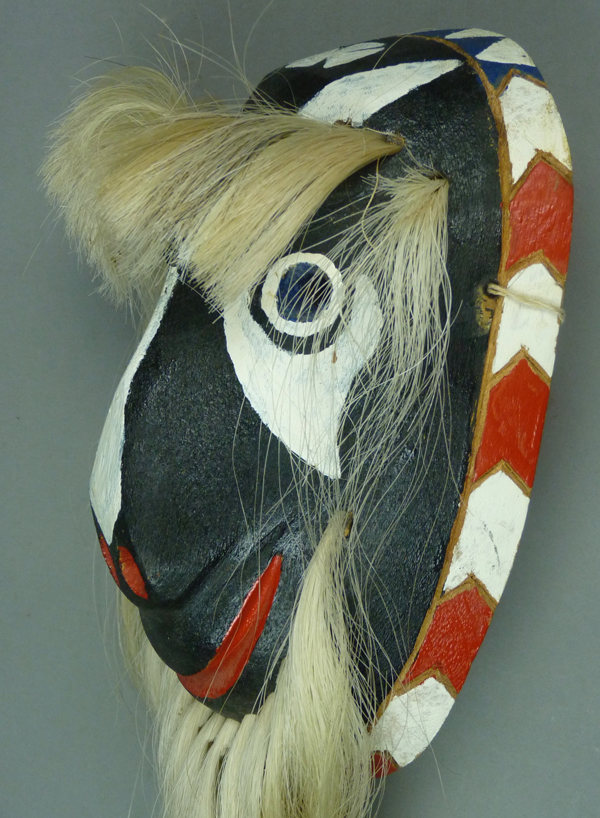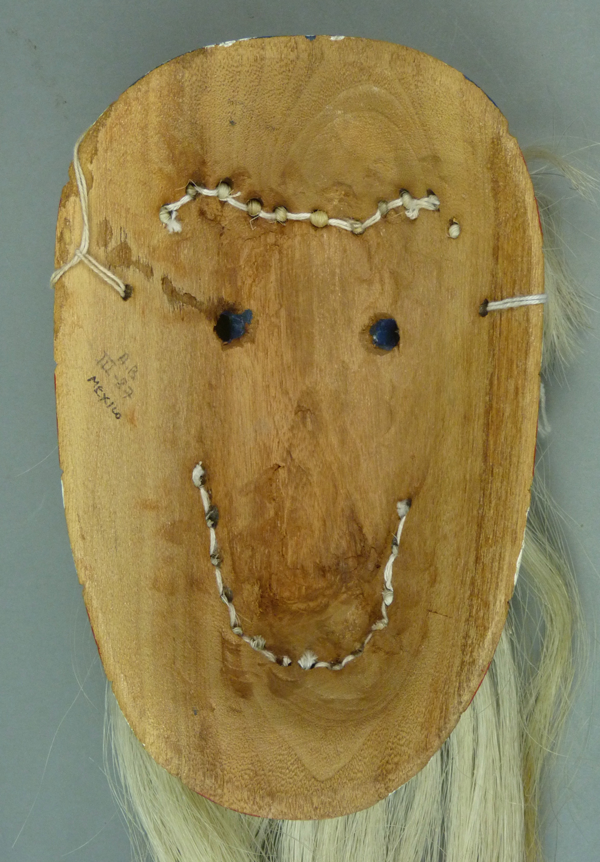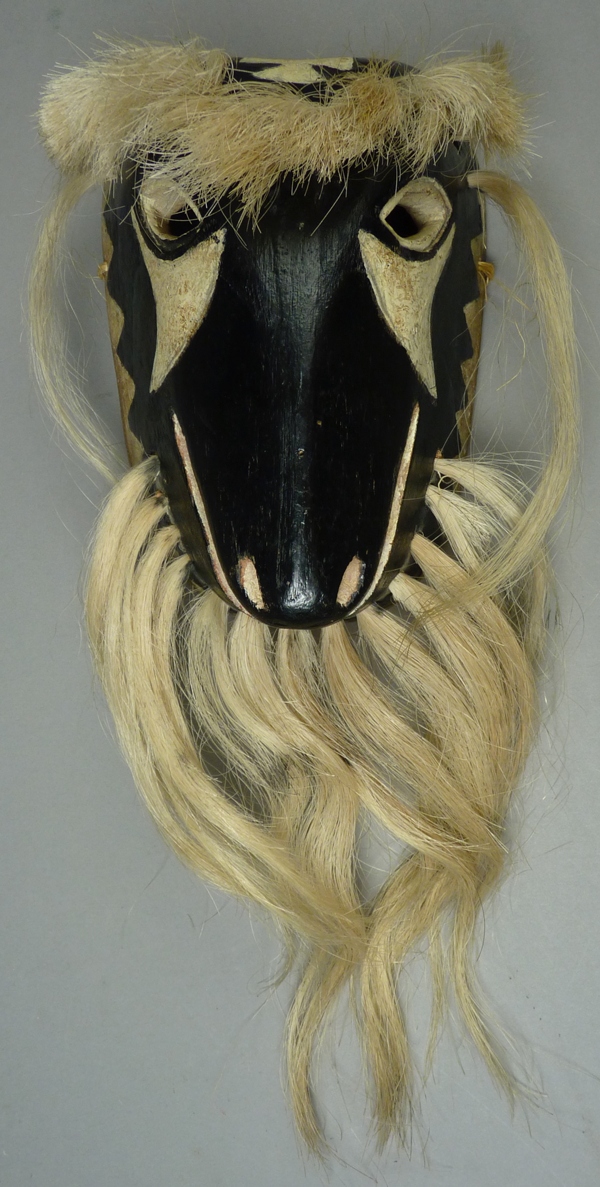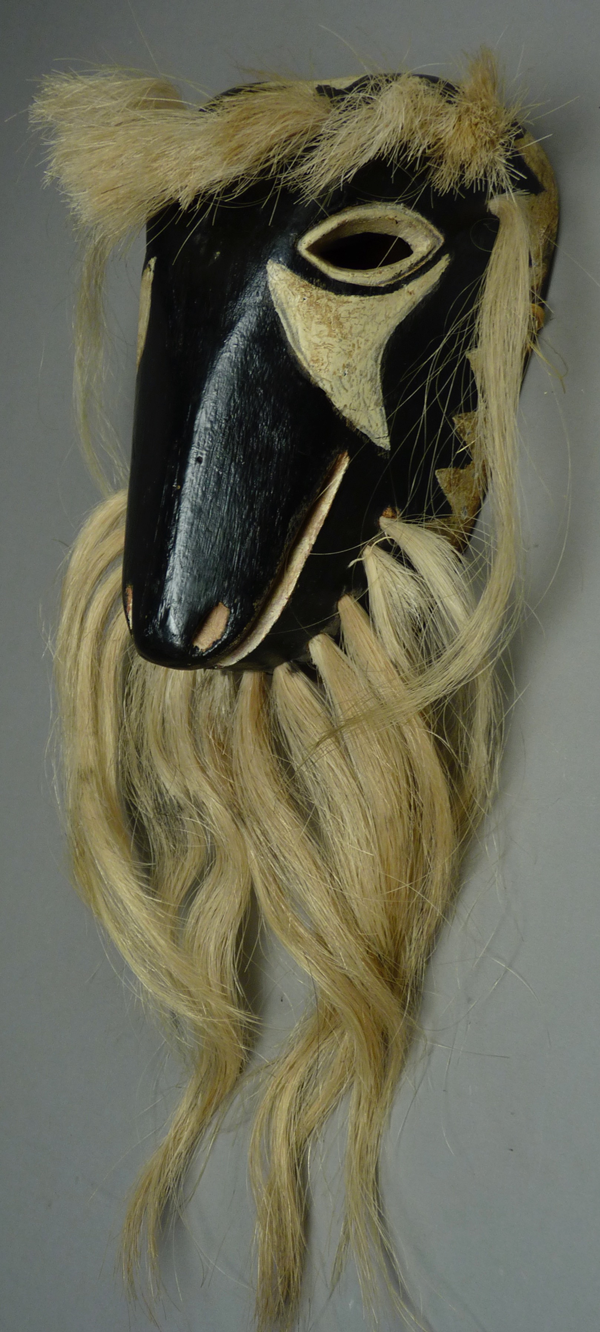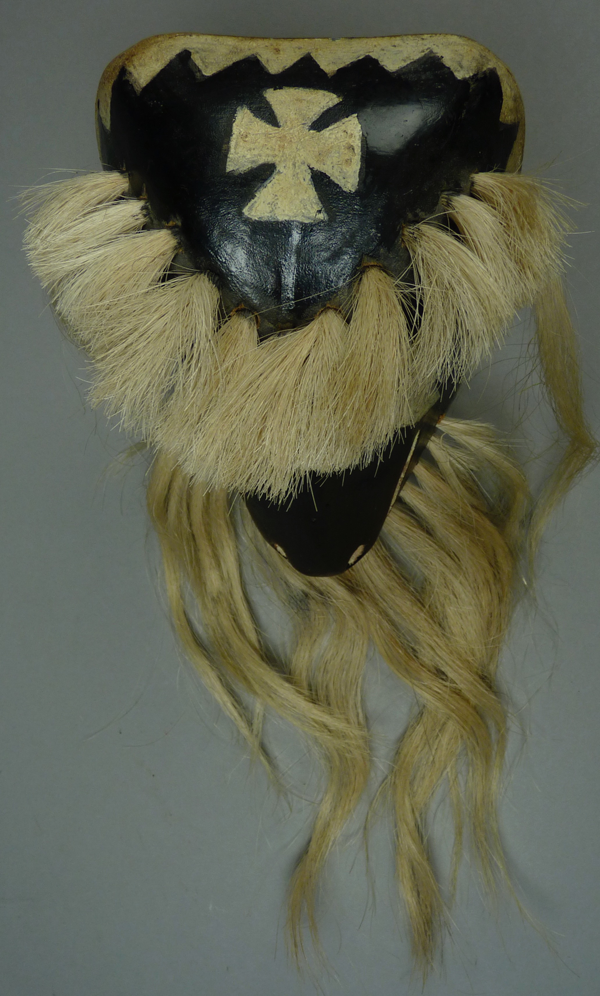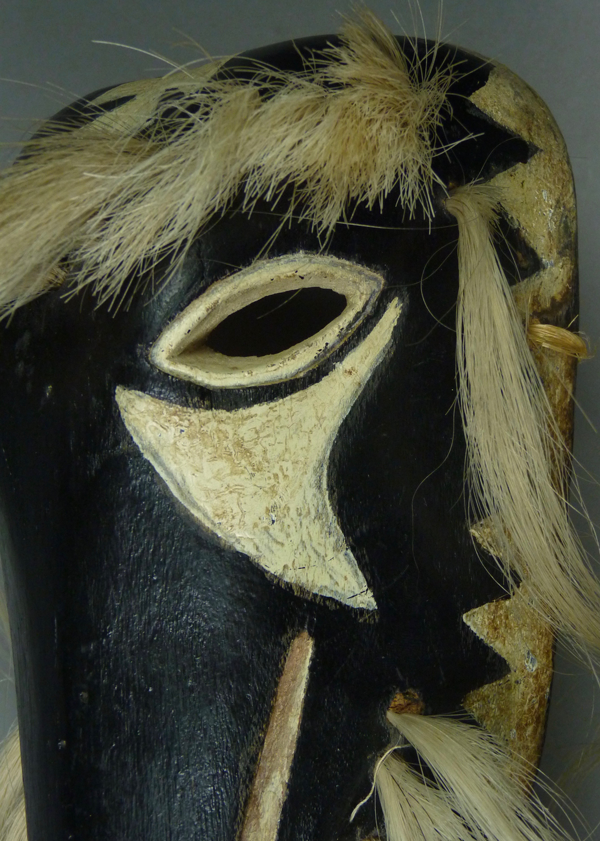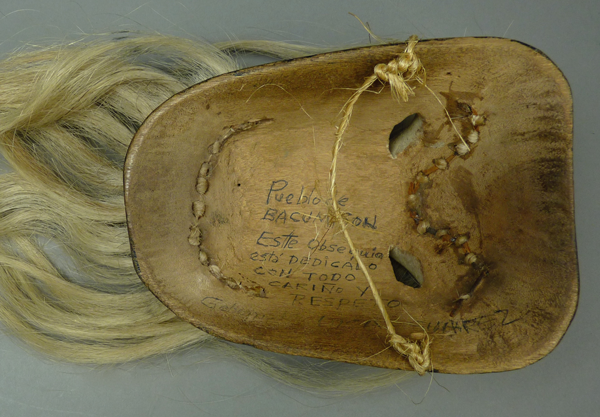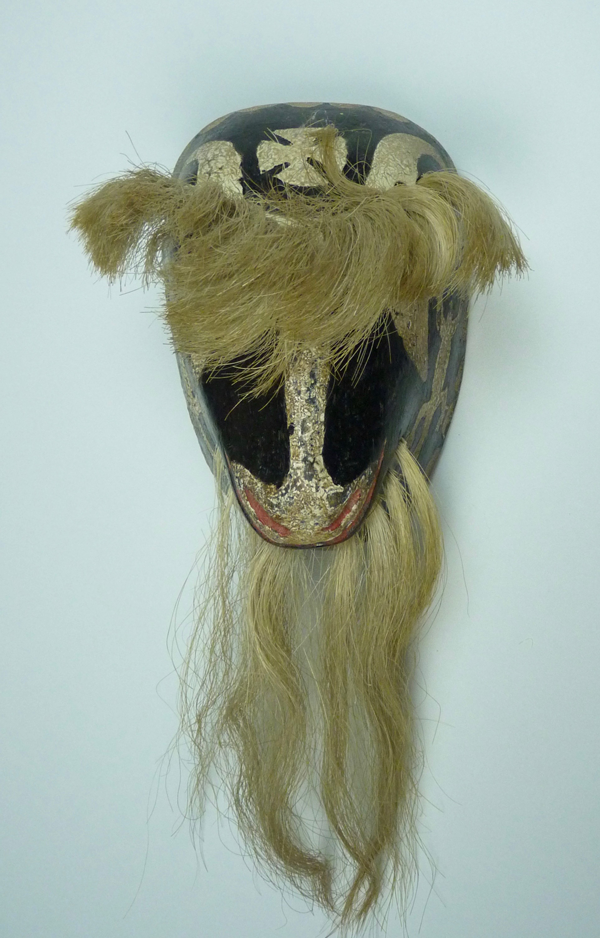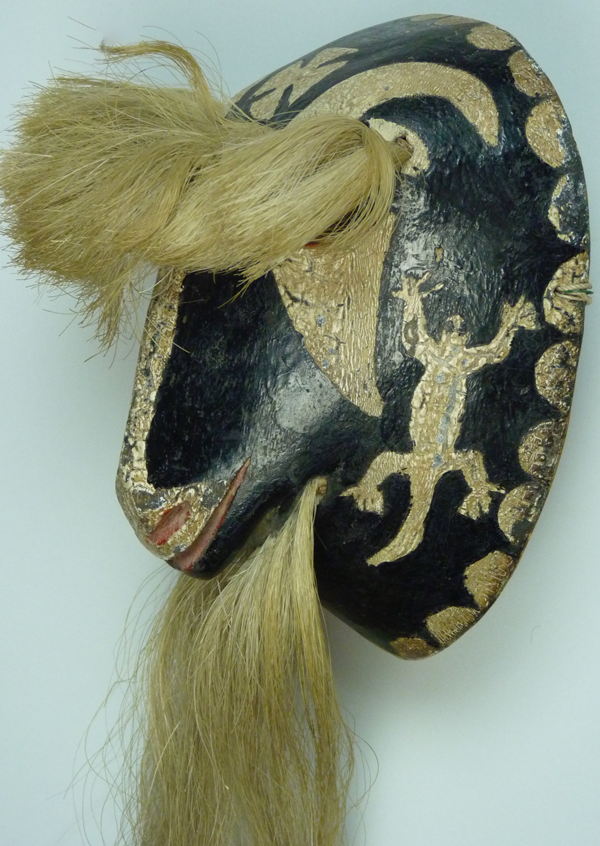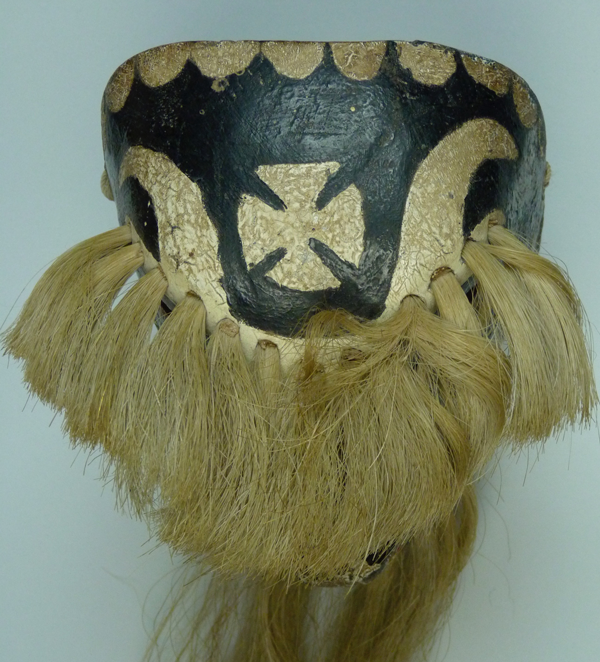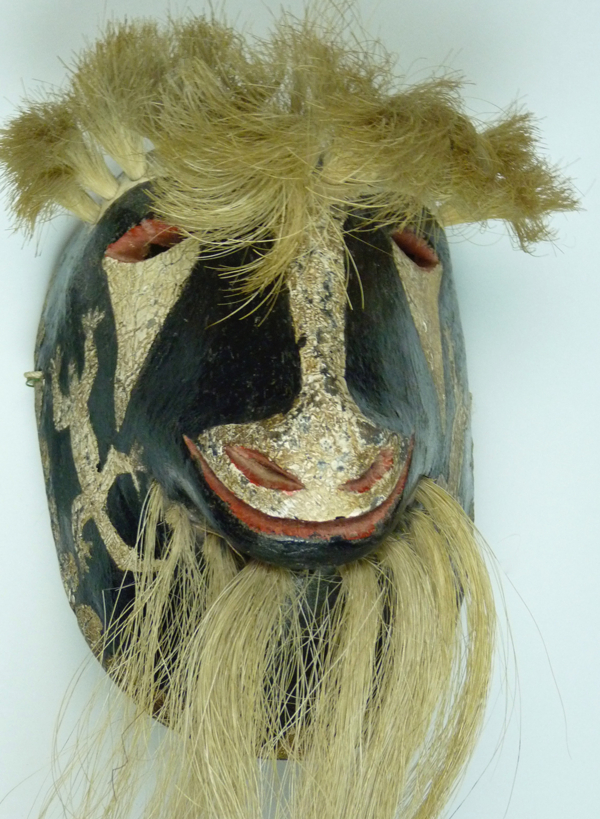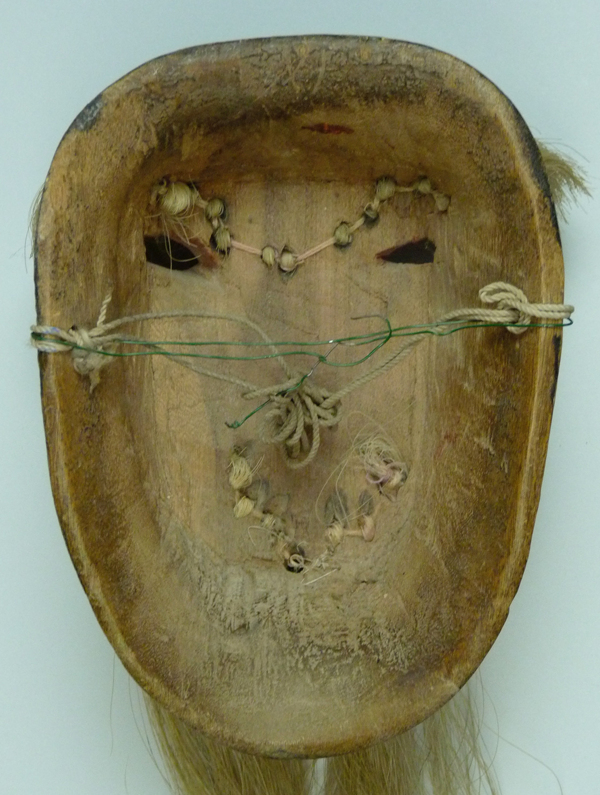This is the fifth in a series of posts about Yoeme (Yaqui) Pascola masks that began on July 4, 2016.
Today I want to contrast three of Antonio Bacasewa’s goat faced Pascola masks that I bought from Tucson merchants with two more Goat Pascola masks that are old and worn. Here is one that was mildly danced, to get us started.
On his goat masks, Antonio was prone to emphasize flat spots on the nasal ridge and muzzle. We will see this over and over again on today’s masks.
In this view I am examining the flat areas on the nose and muzzle. In passing, one can see one of the pegs, just lateral to the eye.
Looking down on the brow, one can see many pegs, and another view of the nearly flat areas on the muzzle.
This flat areas roll down over the muzzle like a ribbon.
In this side view, one can see some of the pegs in the beard, as well as a few in the brow hair.
This mask is 7½ inches tall, 5½ inches wide, and 3¾ inches deep.
This is a mildly danced back with stained edges, while the center surface is raw and unstained. Probably this mask was brought up to Tucson as a made for sale mask, danced in a few fiestas, and then purchased from the dancer. I bought it from an Indian arts dealer in the 1990s, but it had probably been in a Tucson collection for years before that. You may have noticed that the white paint is cracked with age.
This second goat Pascola mask was made for sale, and advertises its species with painted horns.
Here is another flat muzzle. No two are the same.
On this goat there are painted ears with red interiors.
There is a familiar forehead cross.
A large flat muzzle meets a sharp nasal ridge. We see a clown’s smile.
This mask is 8¼ inches tall, 5½ inches wide, and 4 inches deep.
This goat has a very familiar back
A third made for sale goat looks quite different from the other two, with round eyes and a nose with a completely different profile.
Blue paint joins the usual colors. Of course this overhead view reveals the expected pegs.
This goat has a whimsical face.
From this angle one can see the flat ribbon contour of the muzzle.
This mask is 8 inches tall, 5 inches wide, and 3¼ inches deep.
This made for sale mask was collected directly from Antonio by Barney Burns and Mahina Drees in March, 1987 and they documented this on the back. He died in 1991.
I purchased the next mask from Robin and Barbara Cleaver in 2004; they had obtained it from a dealer in Mexico City. Ironically, it arrived with essentially no documentation, except that there was an elaborate dedication written in pencil on the back. It took me quite a while to recognize the obvious, that this was a mask carved by Antonio Bacasewa
There were many obvious clues, including the freehand painted rim design, forehead cross, and triangles under the eyes. The sweet smile of this mask is not unlike that of the one just above, the one with the “whimsical face.” On this goat, the flat spot is in a different place, at the top of the muzzle, tapering to a ridge at the bottom.
In this side view, one can even see a wooden peg, just to the side of the corner of the mouth. In fact, every hair bundle of the beard is pegged, but the brow bundles are not.
This forehead cross is typical for Antonio.
There is that obvious peg to clue me in.
This mask is 7½ inches tall, 5½ inches wide, and 3 inches deep.
On the back, which is stained from extensive ceremonial use, is this elaborate dedication, which reads—
“Pueblo de Bacum, Son. Este Obsequia está dedicado con Todo Cariño y Respeto [a] Gobernar Lucas Suarez.”
[The town of Bacum, Sonora. This gift is dedicated with the greatest affection and respect (to) Governor Lucas Suárez.]
Carlos Lafontaine Suárez was the Governor of the Mexican state of Sonora in 1967, and he died in 1991. I suppose this is a reference to that gentleman, and that we can date the gift of this mask to 1967, after perhaps five or ten years of dancing. After his death his estate must have sold the mask, releasing it to come to me in 1994.
The last mask in today’s post was collected in Sonora in the 1980s, and came with little if any provenance. It is in the collection of Robin and Barbara Cleaver. Because it was so obviously old and worn, my initial impulse was to regard this mask as unidentifiable. Yoeme Goat masks were first documented in Potam, in the Mexican state of Sonora, in about 1940, and I wondered if it might actually date back to that period.
Eventually, years after my initial meeting with this mask, I noticed the wooden pegs. In the following photo two pegs are visible, one in the hair bundle located on the small painted left ear, and another to the left of the painted lizard’s left foot. These pegs look just like those on Antonio’s more recent masks. Otherwise there are many other familiar design details, such as the forehead cross, and the understated mouth that resembles that on the last two masks.
Looking at this old goat mask from above, we see that the hair bundles that form the brow are all pegged.
With its sharp ridge that leads to a broad muzzle, this mask resembles the other older one from Bacum. Both older masks look a little different from the later examples.
Although I lack a photo showing the pegs in the bundles that form the beard, all of those bundles are also pegged. There is no chin cross.
The back is old and worn.
Next week we will look at some canine masks by Antonio Bacasewa.

